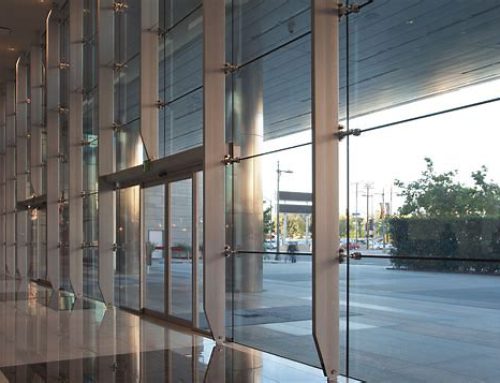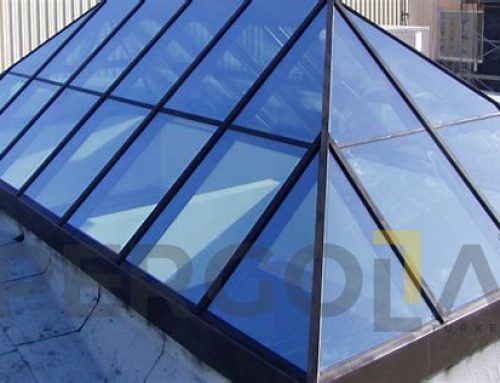Composite facade and everything you need to know about it
Introduction:
In the realm of modern architecture, the composite facade has emerged as a game-changing design solution. This innovative construction technique combines functionality, aesthetics, and sustainability to create visually striking building exteriors. In this article, we will delve into the world of composite facades, exploring their definition, benefits, components, installation process, and notable examples.
-
Understanding Composite Facade:
Composite facades, also known as composite cladding systems or panelized facades, are exterior building envelopes made from a combination of different materials. These facades offer a unique blend of functionality and creativity, as they allow architects to explore a wide range of designs, colors, textures, and patterns. The use of composite materials enables the creation of visually appealing and energy-efficient facades that enhance the overall architectural aesthetics.
-
Components of Composite Facades:
Composite facades consist of several key components:
a. Structural Support System: The structural support system provides the necessary framework for the facade panels. It ensures the stability and integrity of the overall construction.
b. Insulation Layer: An insulation layer is integrated into the facade to enhance the energy efficiency of the building. It helps to regulate temperature, reduce heat loss, and minimize energy consumption.
c. Composite Panels: The facade panels are the primary visual element of the composite facade. These panels are made from a combination of materials such as aluminum, glass, stone, ceramic, or fiber-reinforced polymers (FRP). The choice of materials depends on factors like durability, aesthetics, and maintenance requirements.
d. Fixing and Jointing Systems: Fixing and jointing systems connect the composite panels to the structural support system. These systems play a vital role in ensuring the stability and longevity of the facade.
-
Benefits of Composite Facades:

Composite facades offer numerous advantages for both architects and building owners:
a. Versatility: Composite facades provide architects with a wide range of design possibilities. The flexibility of composite materials allows for intricate shapes, curves, and textures, enabling the creation of unique and visually stunning facades.
b. Energy Efficiency: The integration of insulation layers in composite facades improves the energy performance of buildings. This leads to reduced heating and cooling costs and a smaller carbon footprint.
c. Durability: Composite facades are highly durable and resistant to weathering, corrosion, and fading. They require minimal maintenance, making them a cost-effective long-term solution.
d. Fire Safety: Composite facades can be engineered to meet stringent fire safety regulations. Fire-resistant materials can be incorporated into the design to enhance the overall safety of the building.
-
Installation Process:
The installation process of composite facades involves several stages:
a. Design and Planning: Architects work closely with facade engineers to develop the design concept, considering factors such as aesthetics, performance requirements, and local regulations.
b. Manufacturing: The facade panels are manufactured off-site, allowing for precision and quality control. This process involves the assembly of different layers and materials to create the composite panels.
c. On-Site Installation: The pre-fabricated composite panels are transported to the construction site and installed on the structural support system. The fixing and jointing systems are used to secure the panels in place.
-
Notable Examples:
Composite facades have gained popularity in many iconic buildings worldwide. Here are a few notable examples:
a. Burj Khalifa, Dubai: The world’s tallest building features a composite facade with aluminum and glass panels that reflect the shimmering desert landscape.
b. The Gherkin, London: This iconic skyscraper showcases a composite facade with a distinctive diagonal pattern, made from glass and stainless steel.
c. Heydar Aliyev Center, Baku: The curvaceous facade of this cultural center is composed of composite panels with a white, undulating surface, creating a sense of fluidity and elegance.
-
Sustainability Considerations:
Composite facades contribute to sustainable building practices in several ways:
a. Energy Efficiency: The integration of insulation layers and advanced glazing systems in composite facades improves thermal performance, reducing the building’s energy consumption for heating and cooling. This leads to lower greenhouse gas emissions and decreased reliance on fossil fuels.
b. Recyclability: Many composite facade materials, such as aluminum and glass, are highly recyclable. At the end of their lifespan, these materials can be recycled and used in the production of new products, reducing waste and conserving natural resources.
c. Durability and Longevity: Composite facades are designed to withstand harsh environmental conditions, minimizing the need for frequent repairs or replacements. Their extended lifespan contributes to a more sustainable building industry by reducing material waste over time.
d. Sustainable Material Choices: With the increasing demand for sustainable building materials, composite facades offer a variety of eco-friendly options. For instance, the use of bio-based composites or recycled materials in facade panels can further enhance their environmental performance.
-
Maintenance and Care:
Proper maintenance is essential to ensure the longevity and performance of composite facades. Here are some key considerations:
a. Regular Inspections: Periodic inspections should be conducted to identify any signs of damage, such as cracks, loose panels, or water infiltration. Timely detection allows for prompt repairs, preventing further deterioration.
b. Cleaning: Composite facades should be regularly cleaned to remove dirt, pollutants, and debris. Depending on the materials used, specific cleaning methods and solutions may be recommended to avoid damage or discoloration.
c. Repair and Replacement: In the event of damage or deterioration, prompt repairs or replacements should be undertaken to maintain the integrity of the facade. It is important to work with qualified professionals experienced in composite facade systems for such tasks.
-
Future Trends:
The future of composite facades holds exciting possibilities for further advancements in design, technology, and sustainability:
a. Smart Facades: Integration of smart technologies, such as sensors and adaptive shading systems, can enhance the performance and efficiency of composite facades. These features can respond to environmental conditions, optimizing energy consumption and occupant comfort.
b. Biophilic Design: Incorporating biophilic elements into composite facades, such as green walls or natural materials, can enhance the connection between buildings and nature. This approach improves the overall well-being and productivity of occupants.
c. Digital Fabrication: Advancements in digital fabrication techniques, such as 3D printing and robotic assembly, may revolutionize the production and installation of composite facade components. This could lead to greater customization, cost-efficiency, and reduced construction waste.
Conclusion:

Composite facades have become a defining element of modern architecture, combining functionality, aesthetics, and sustainability. As technology and design capabilities continue to advance, composite facades offer architects and building owners unparalleled opportunities for creating visually stunning and environmentally conscious structures. By harnessing the potential of composite materials and innovative construction techniques, the future of facade design is poised for remarkable transformations.




Leave A Comment